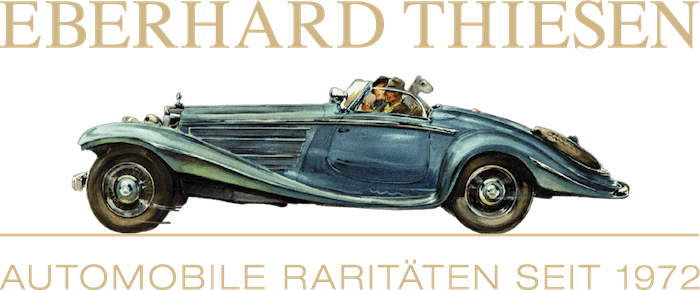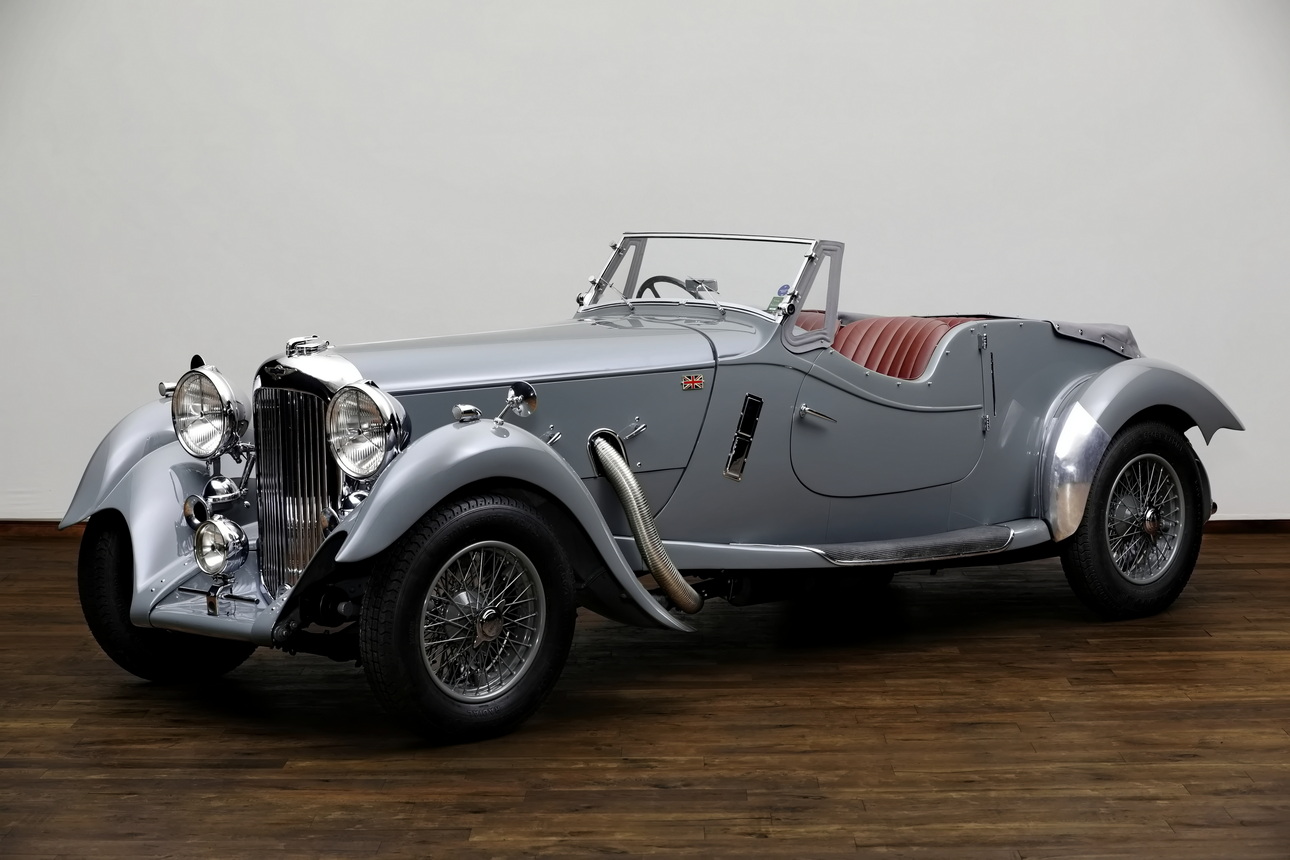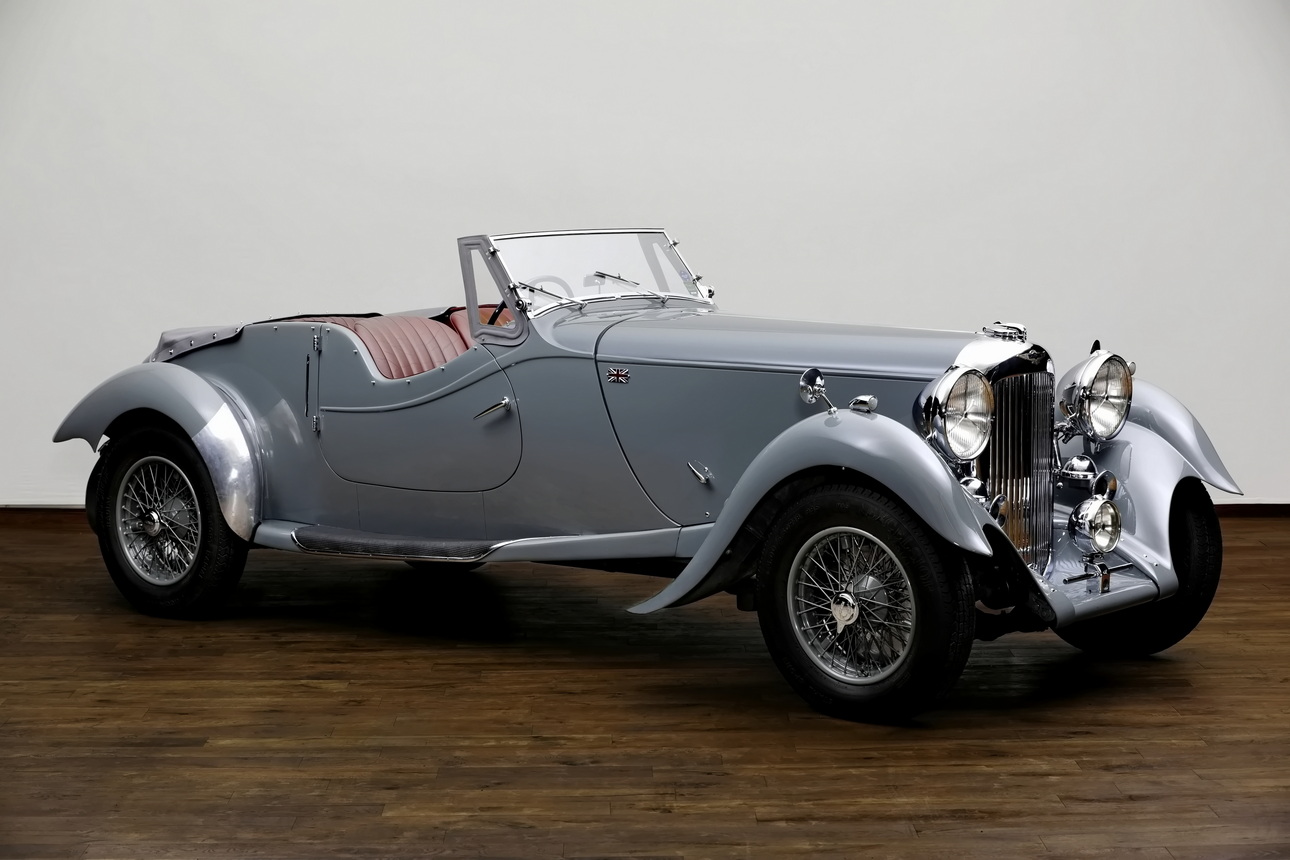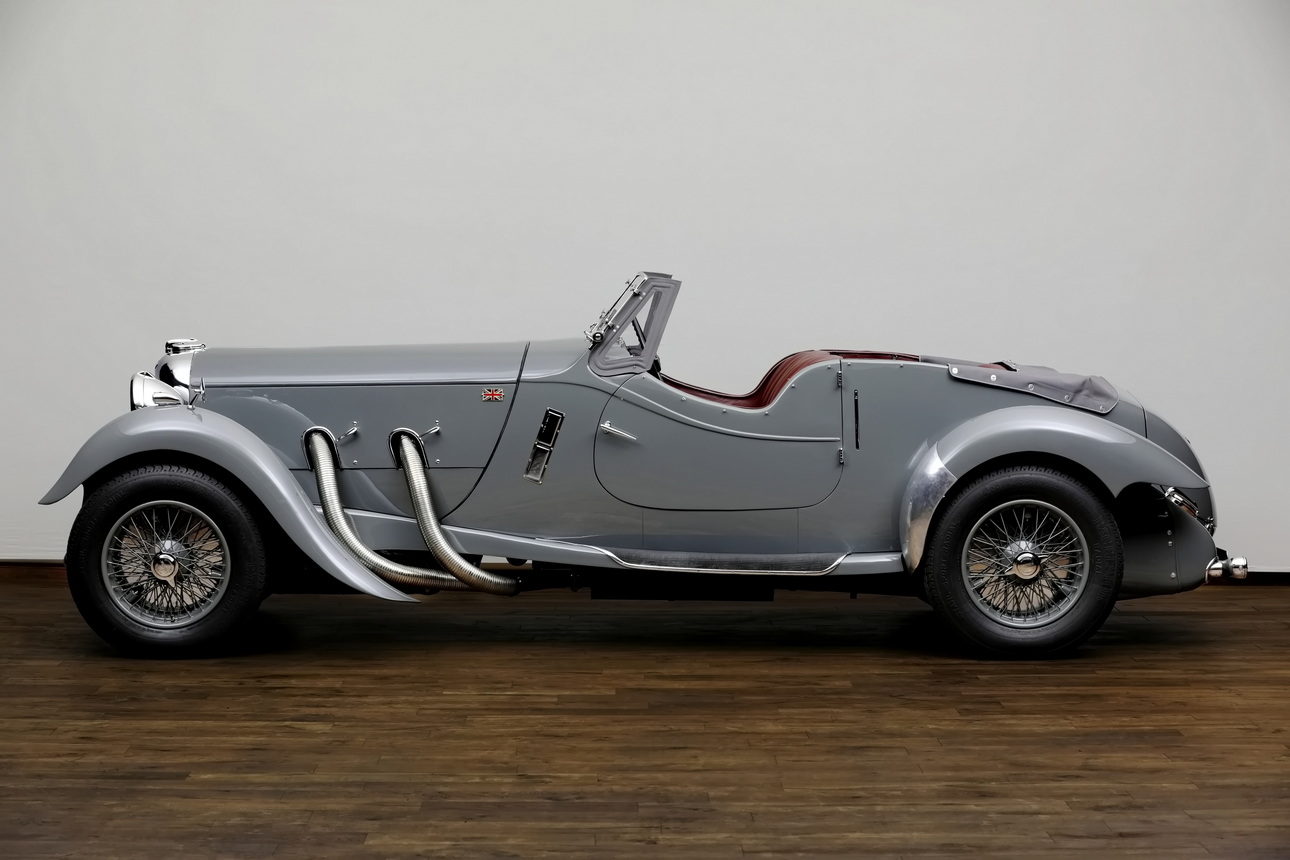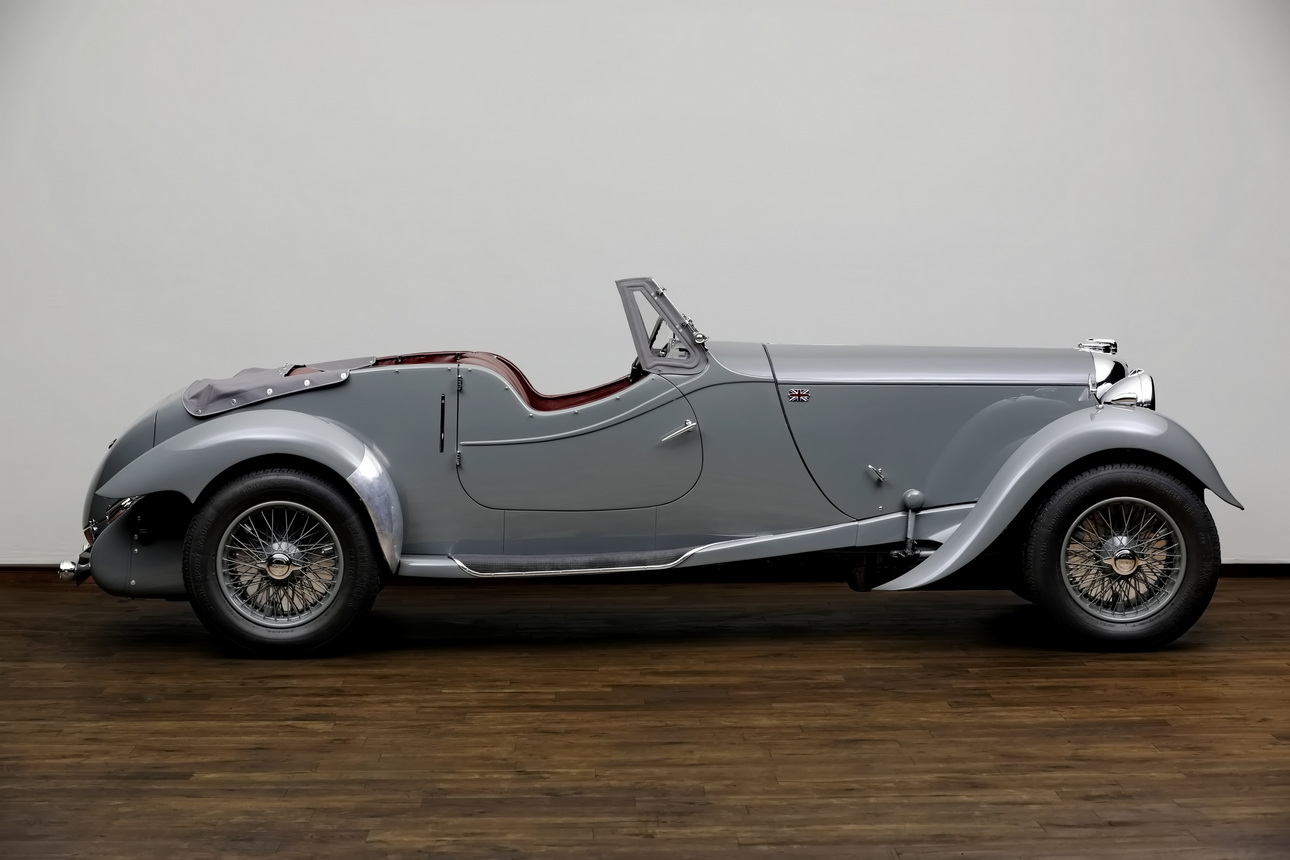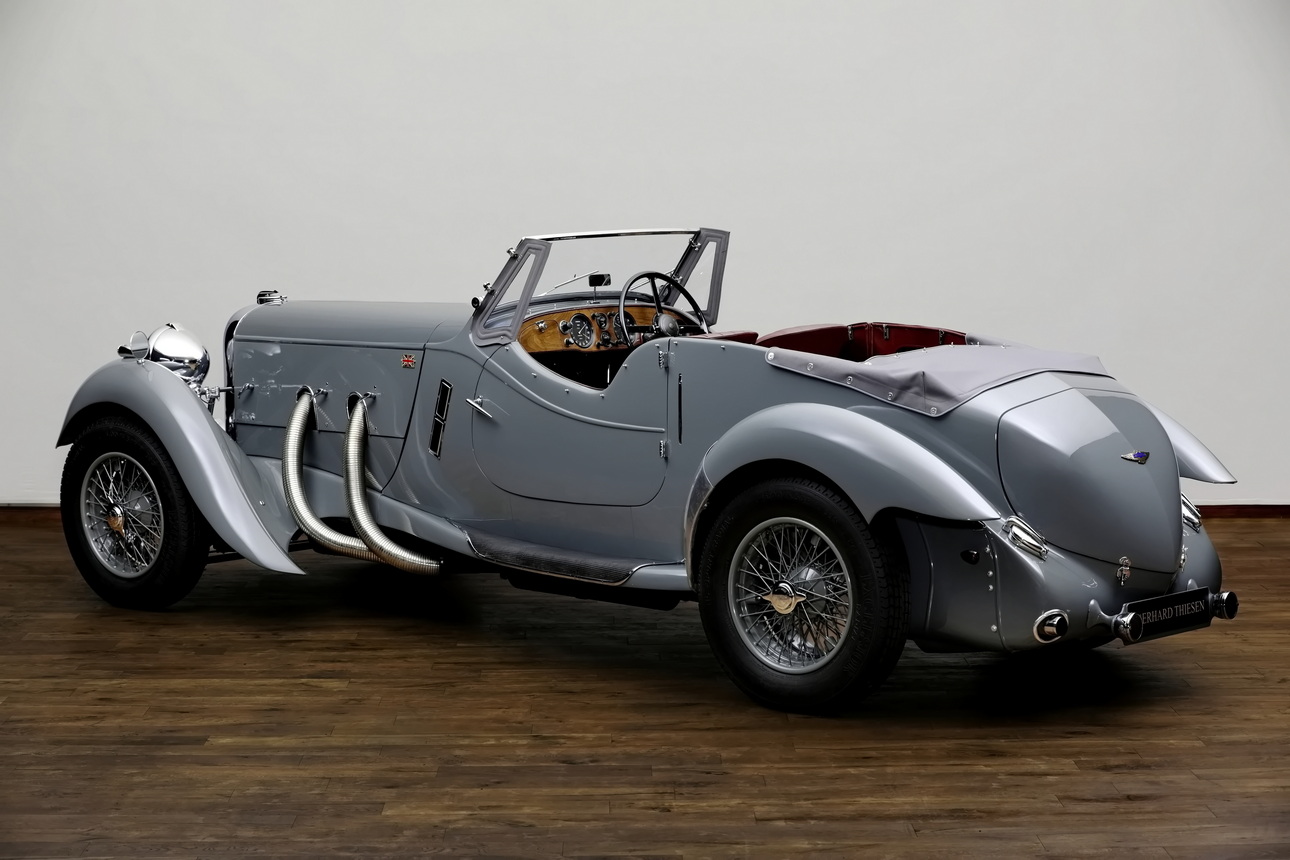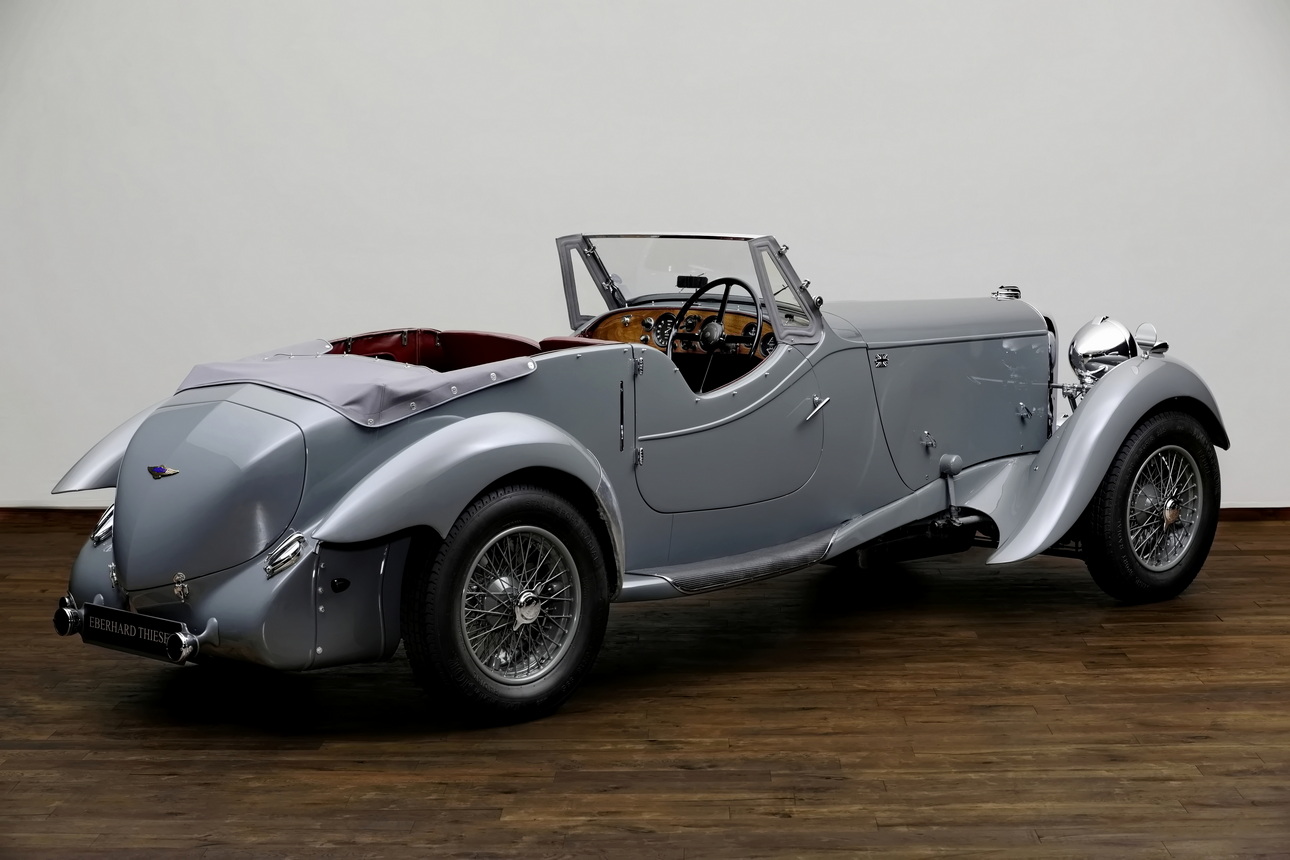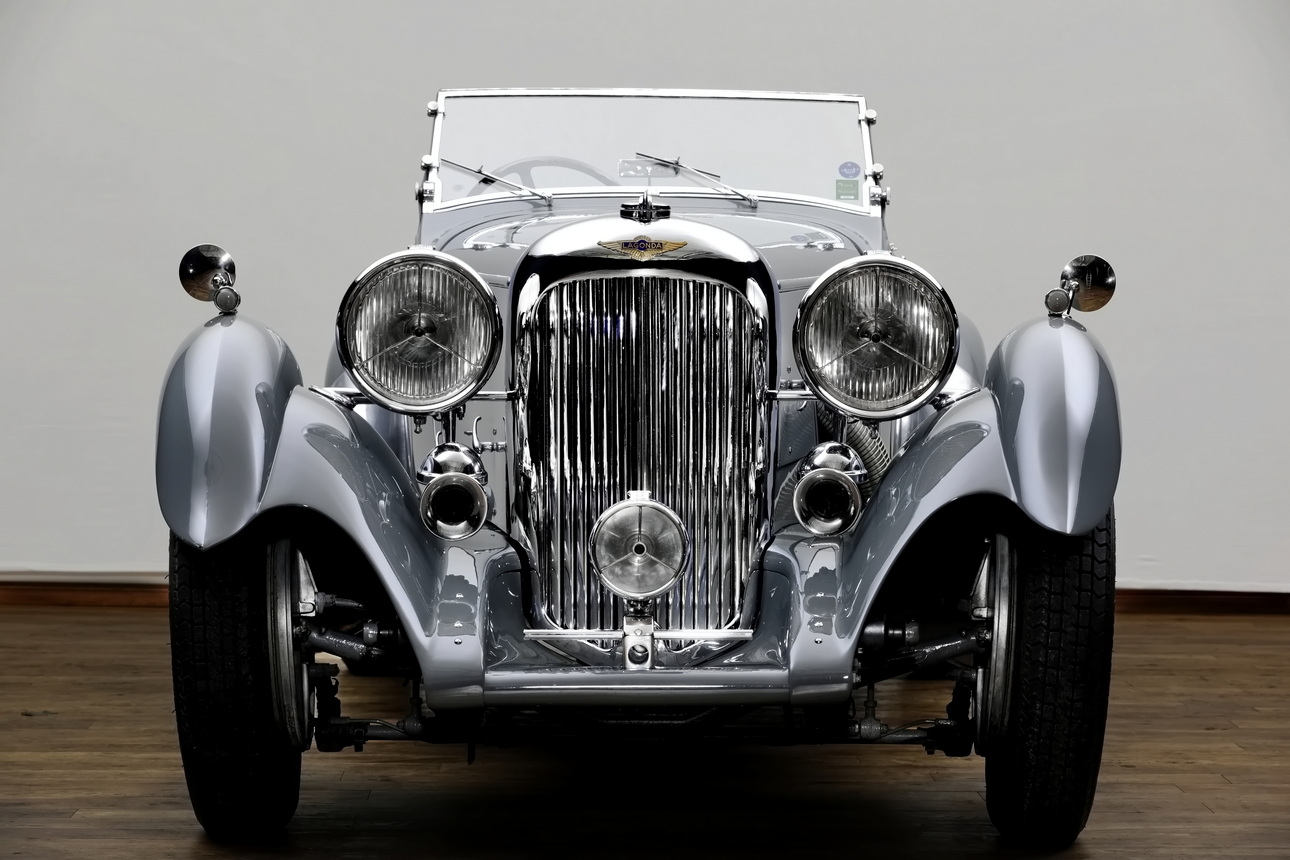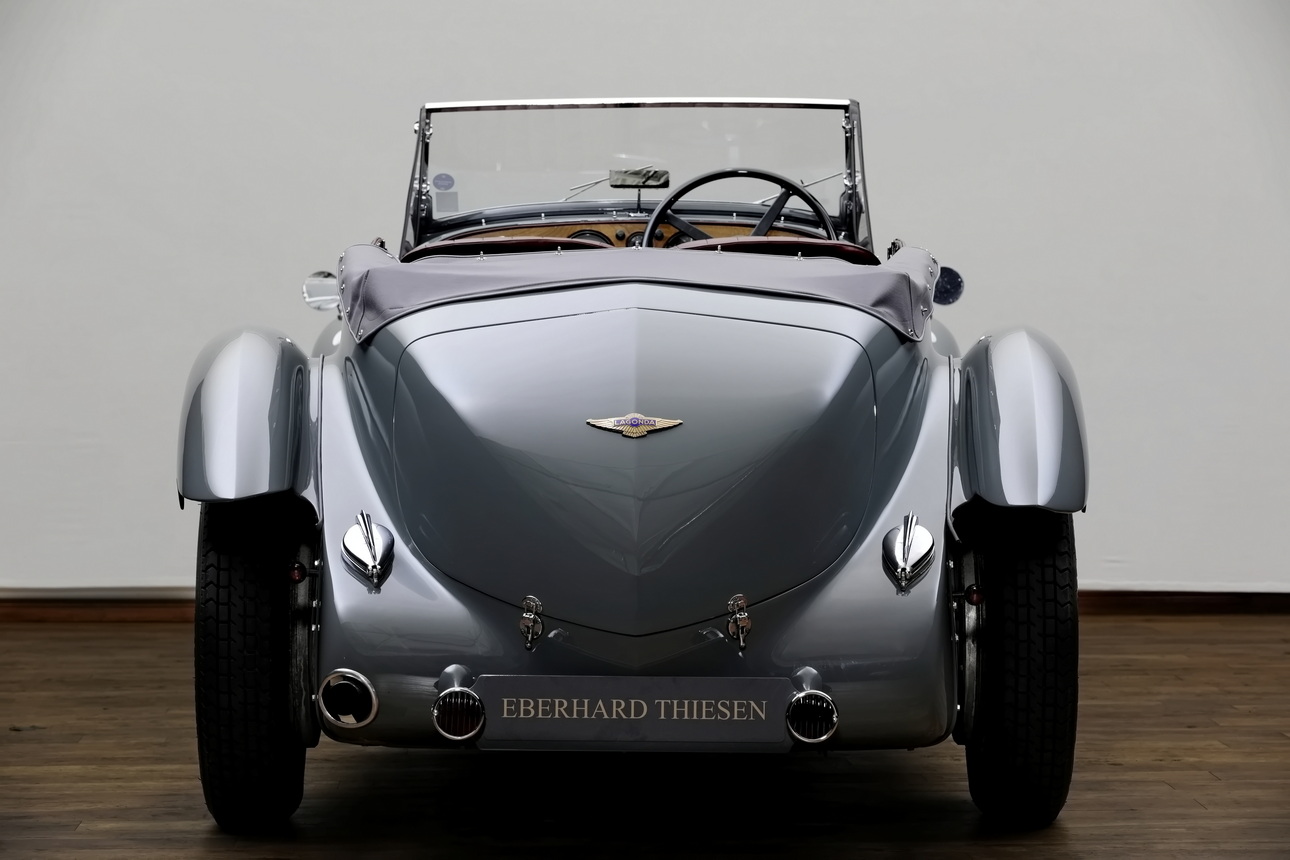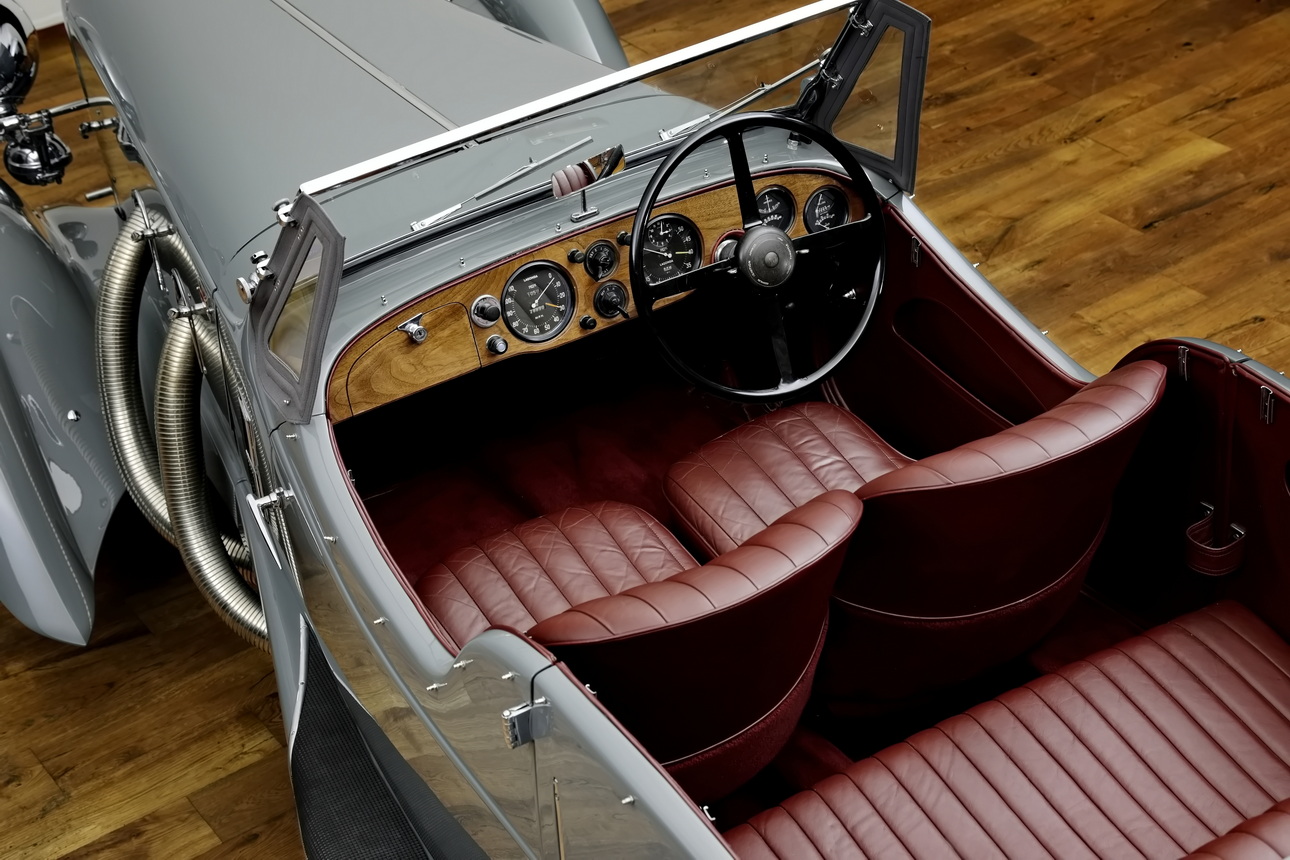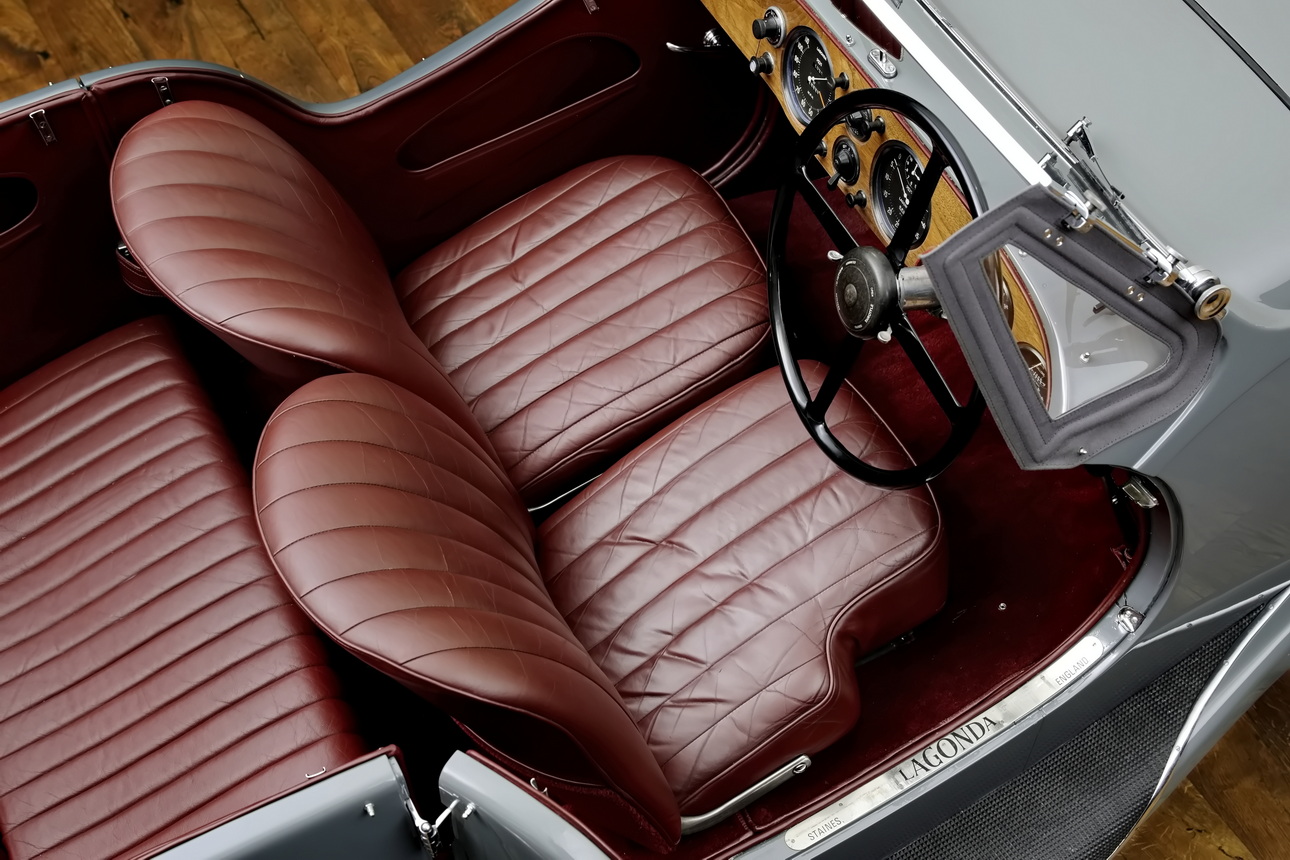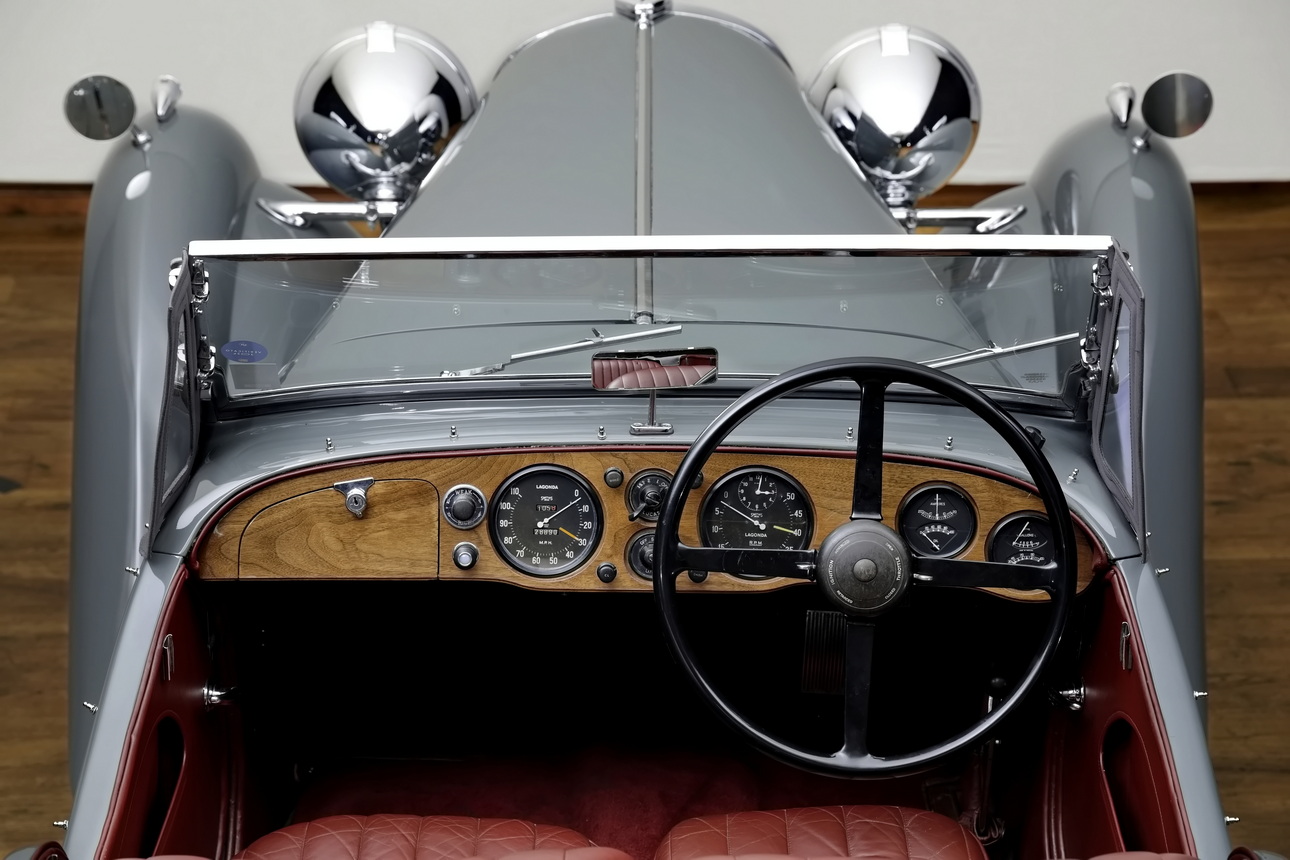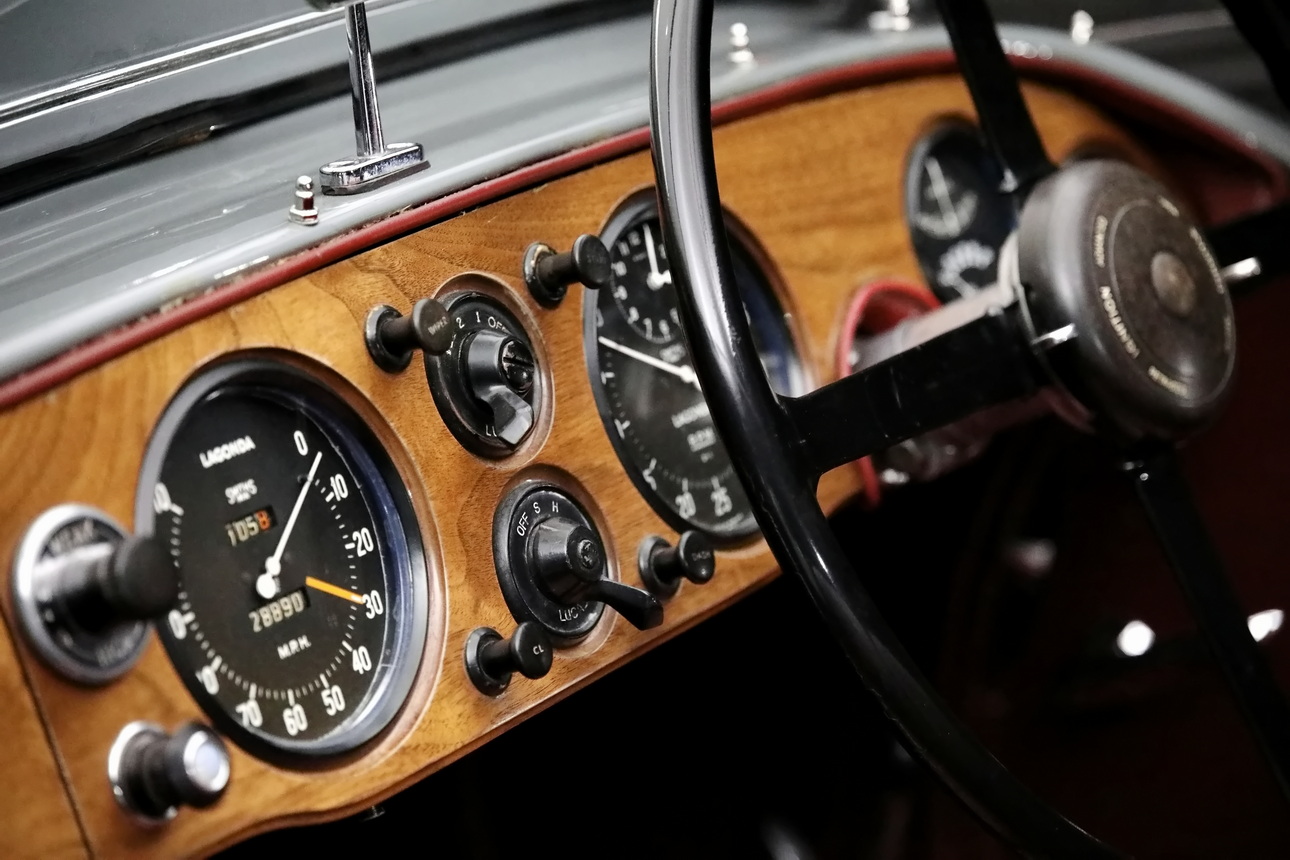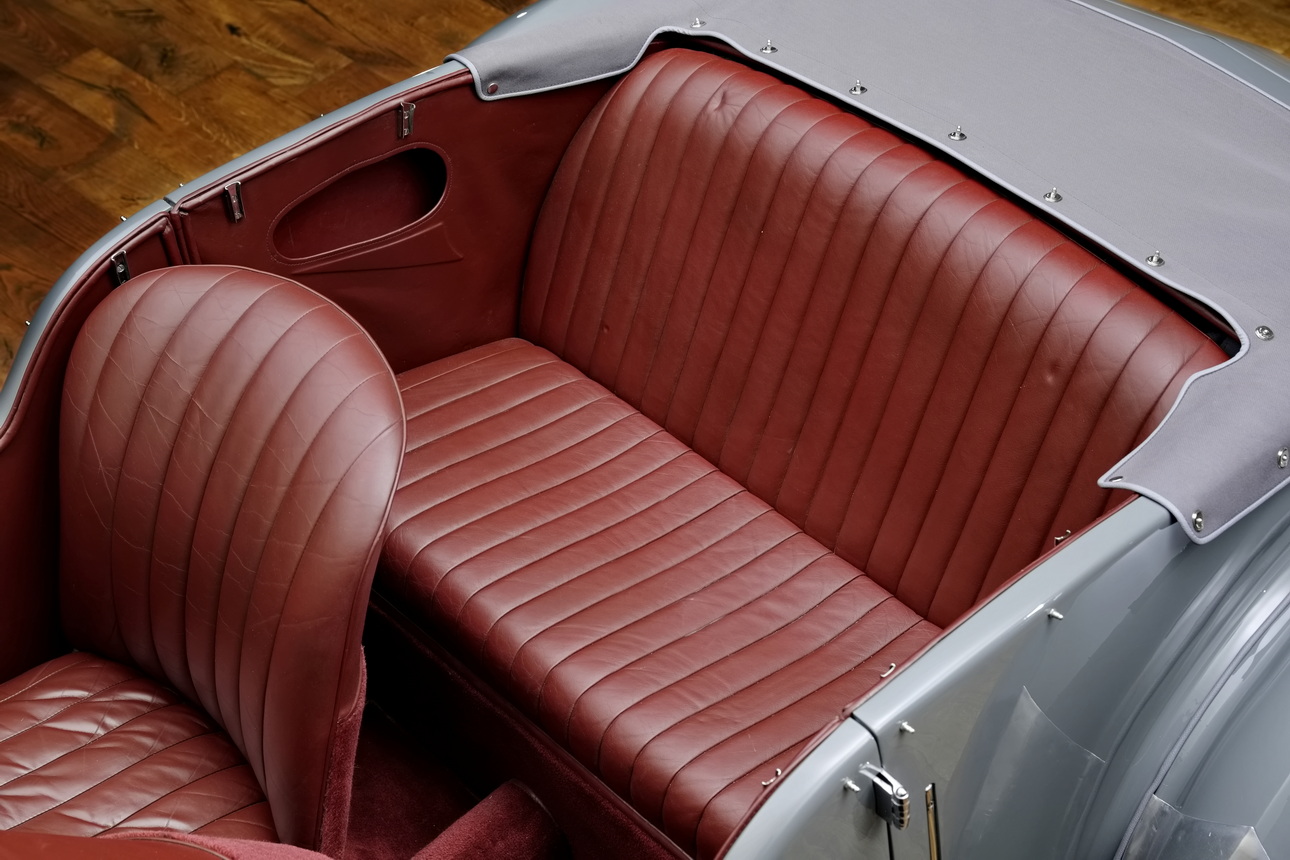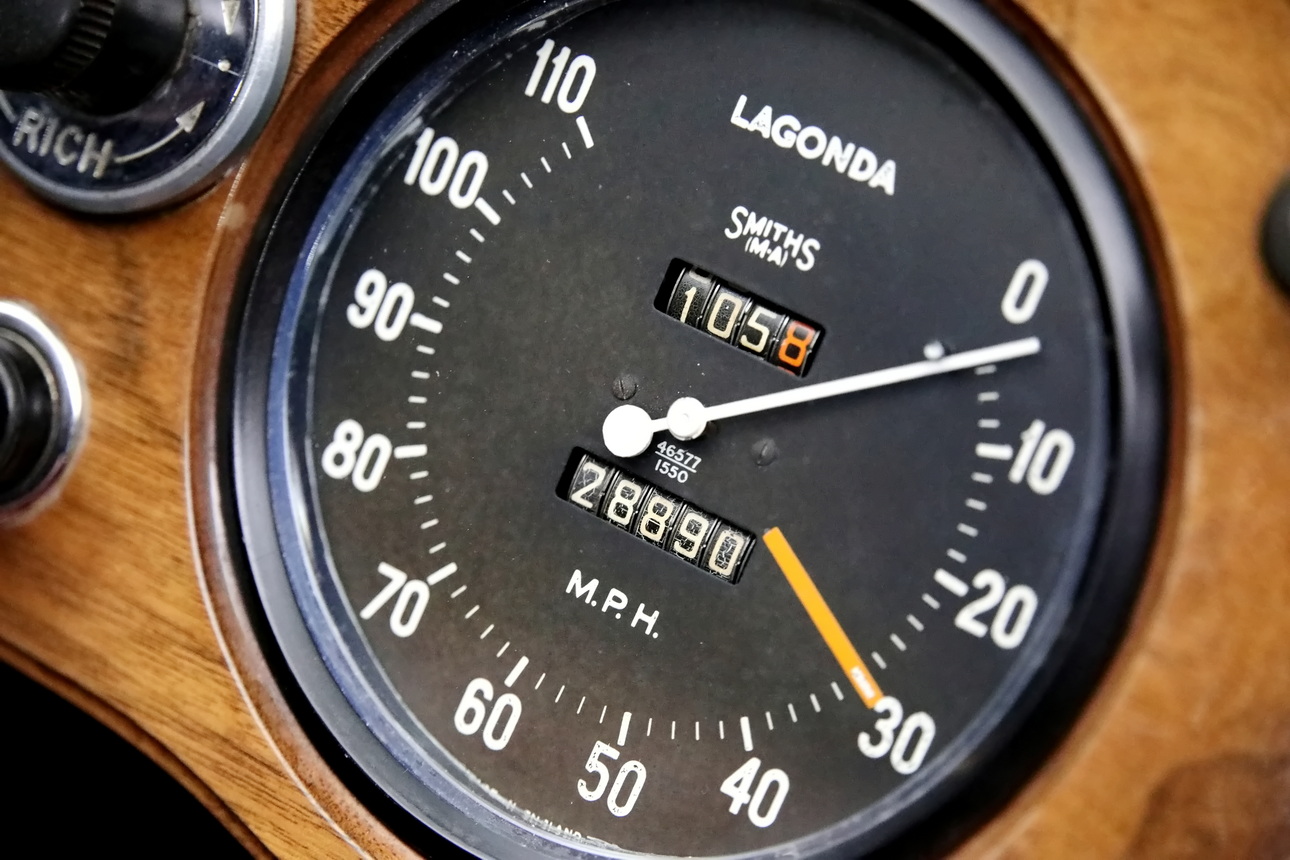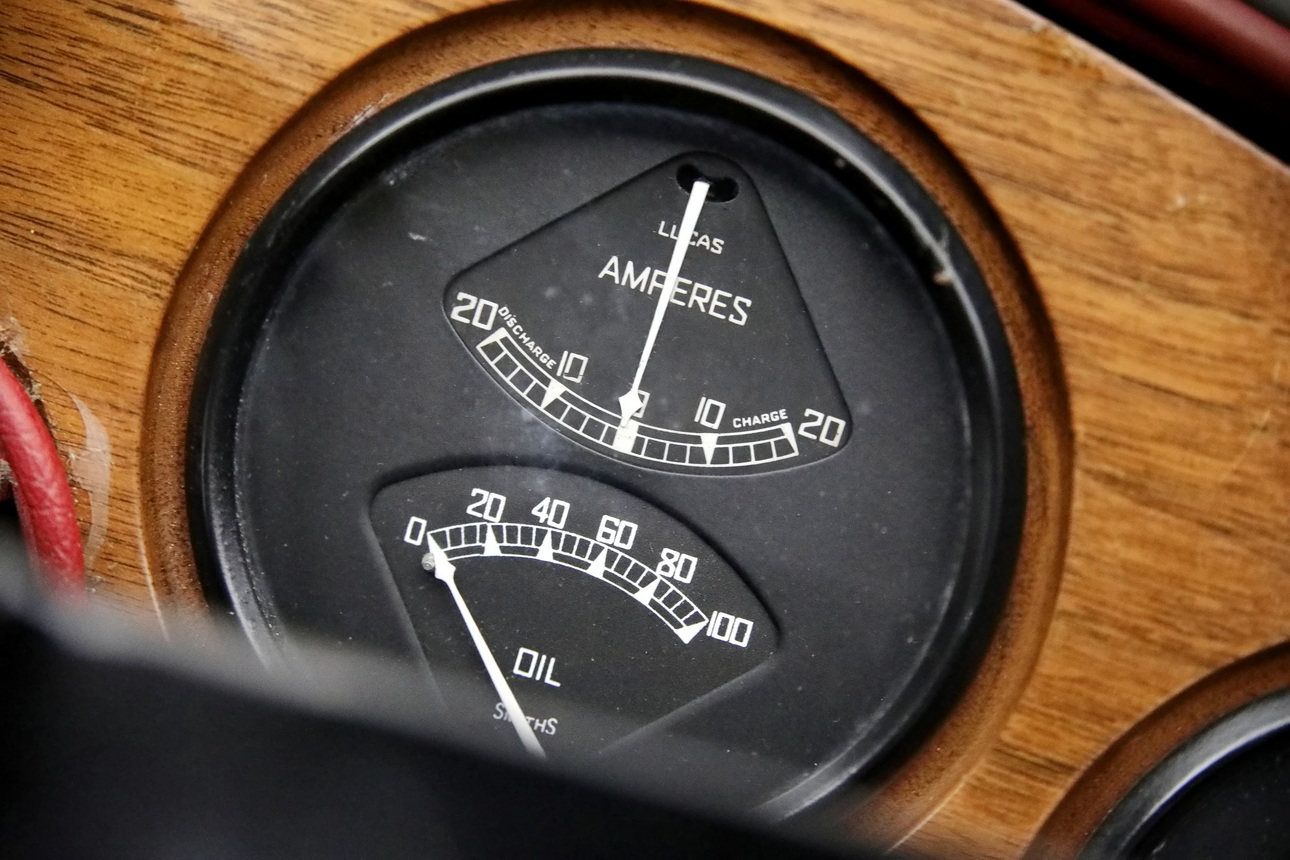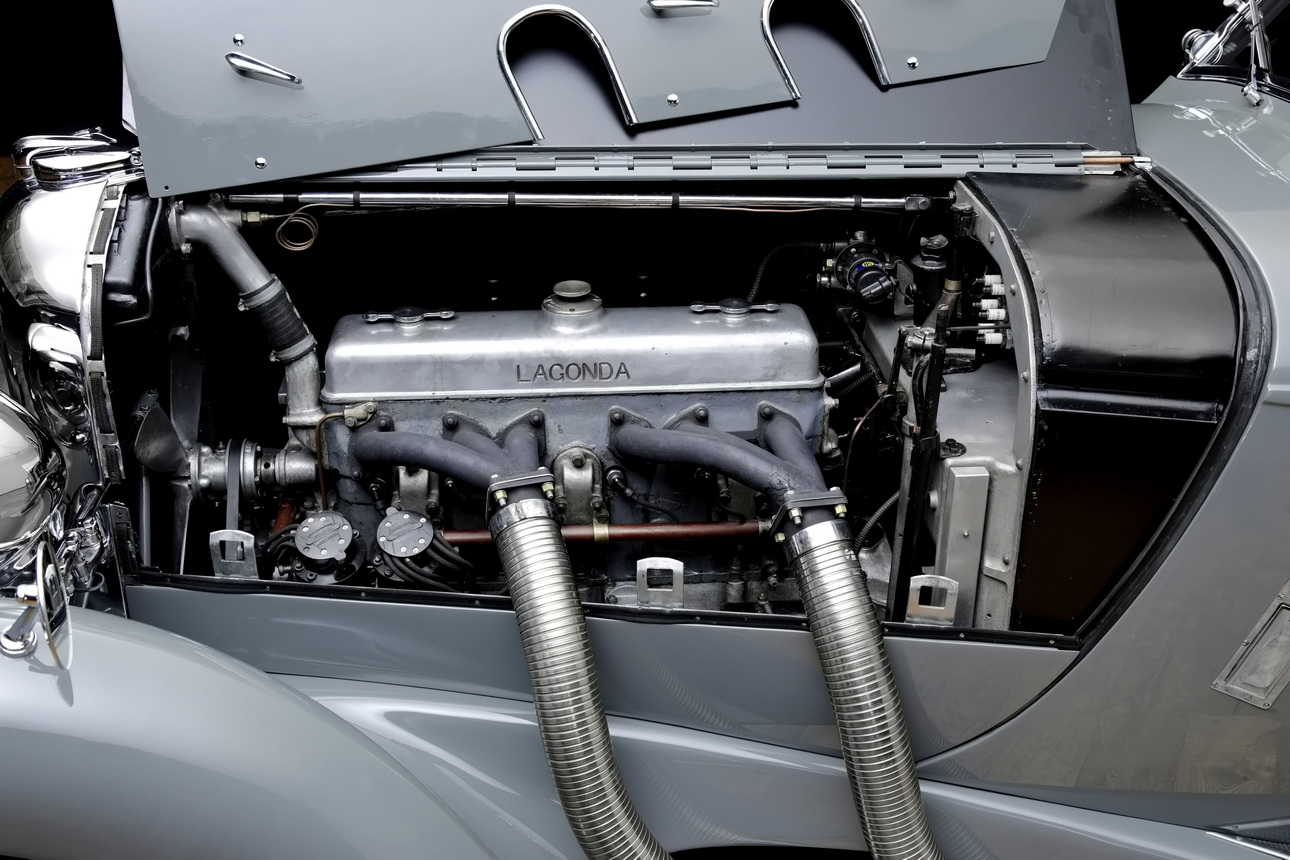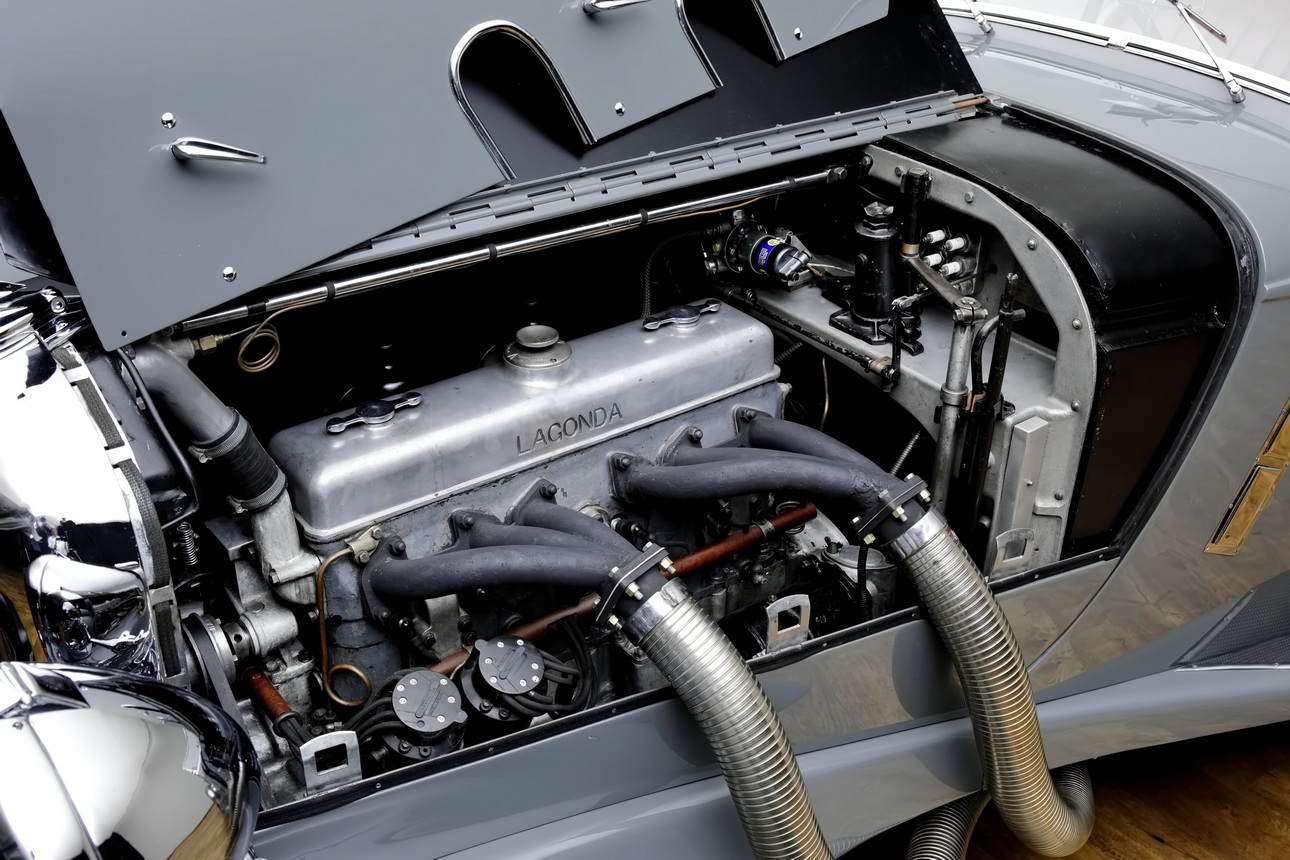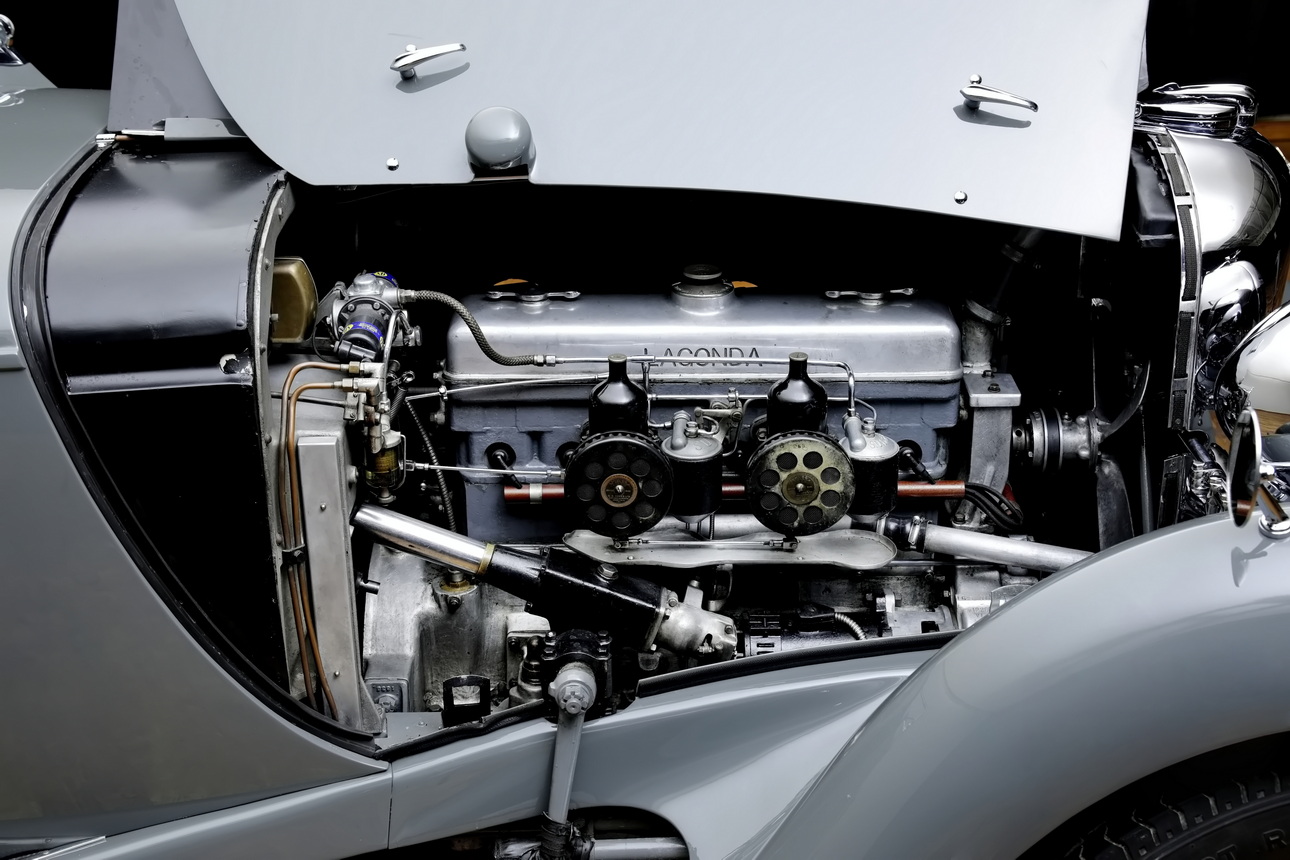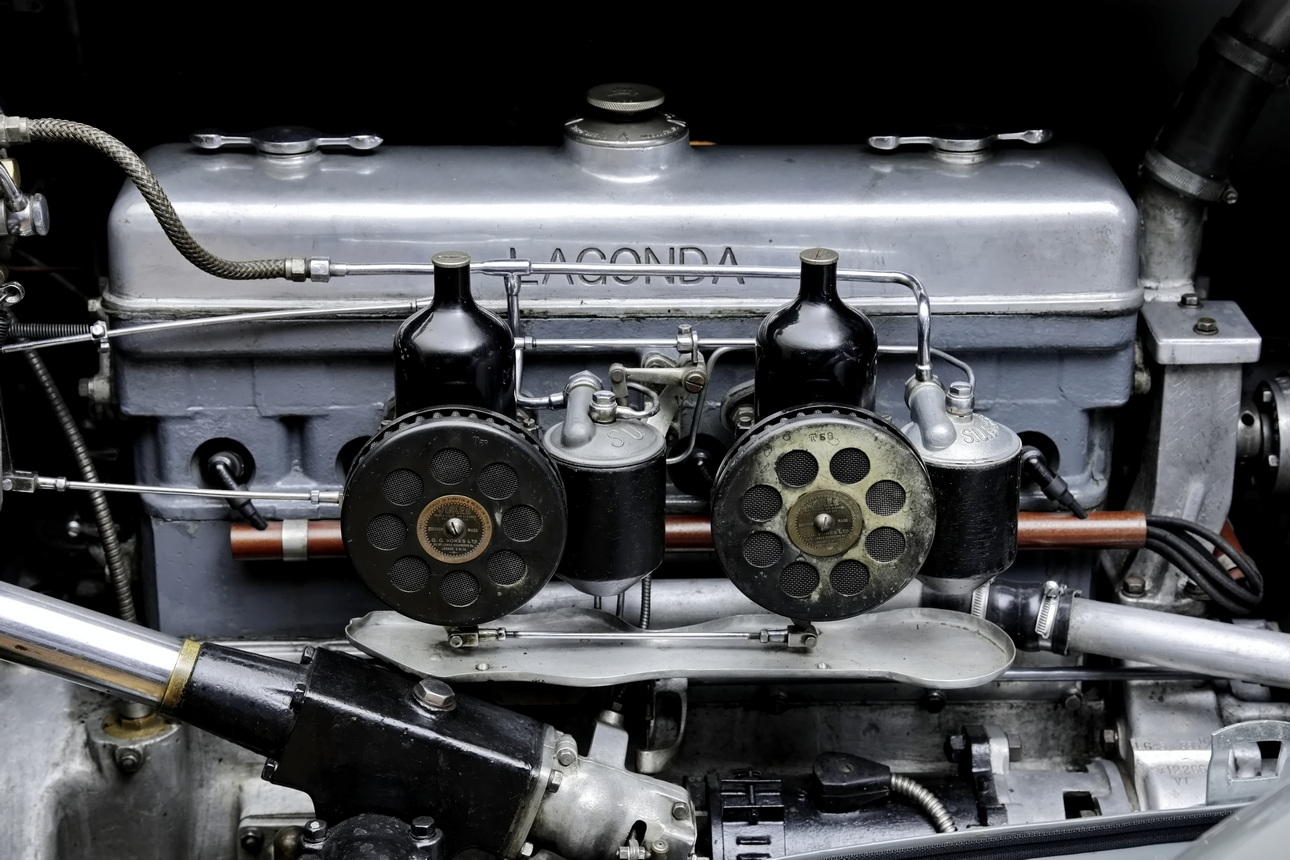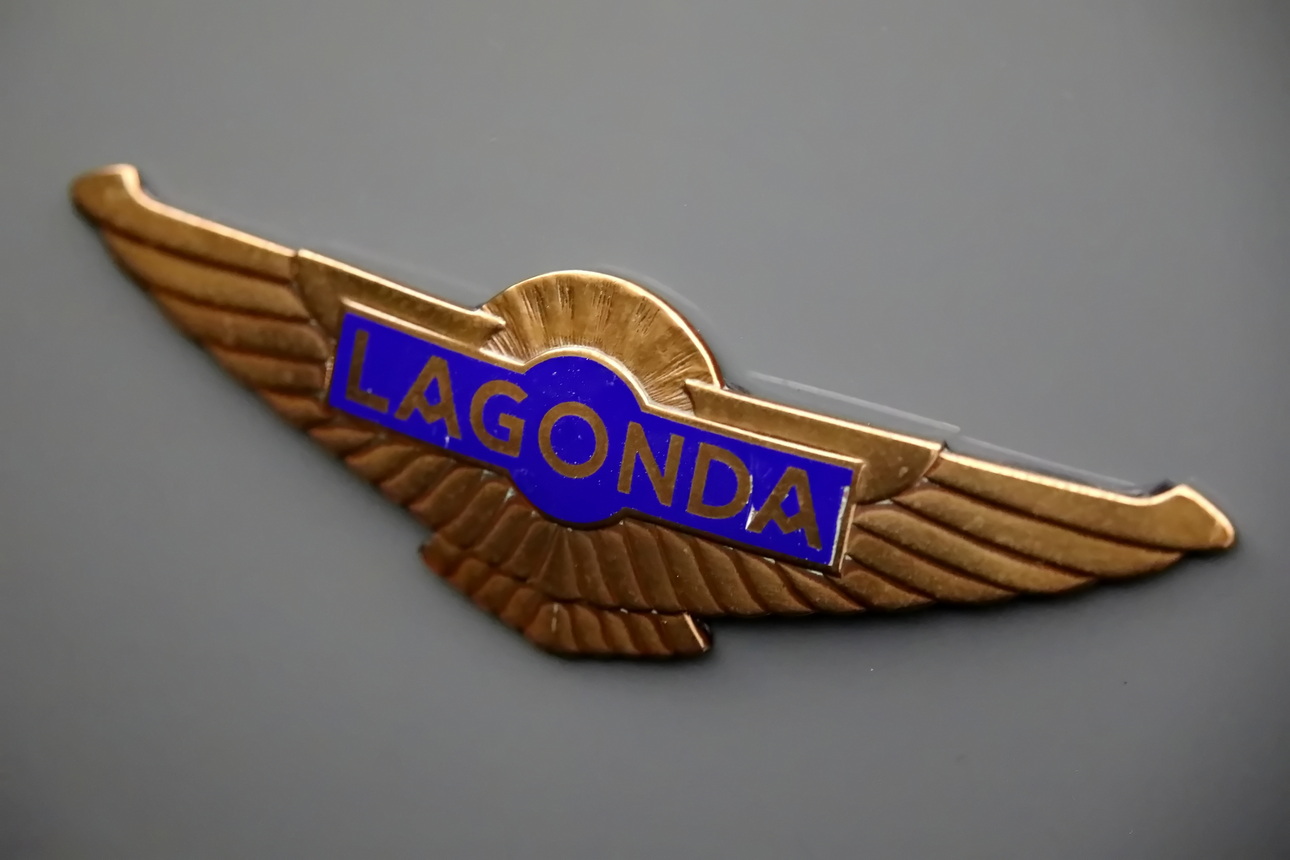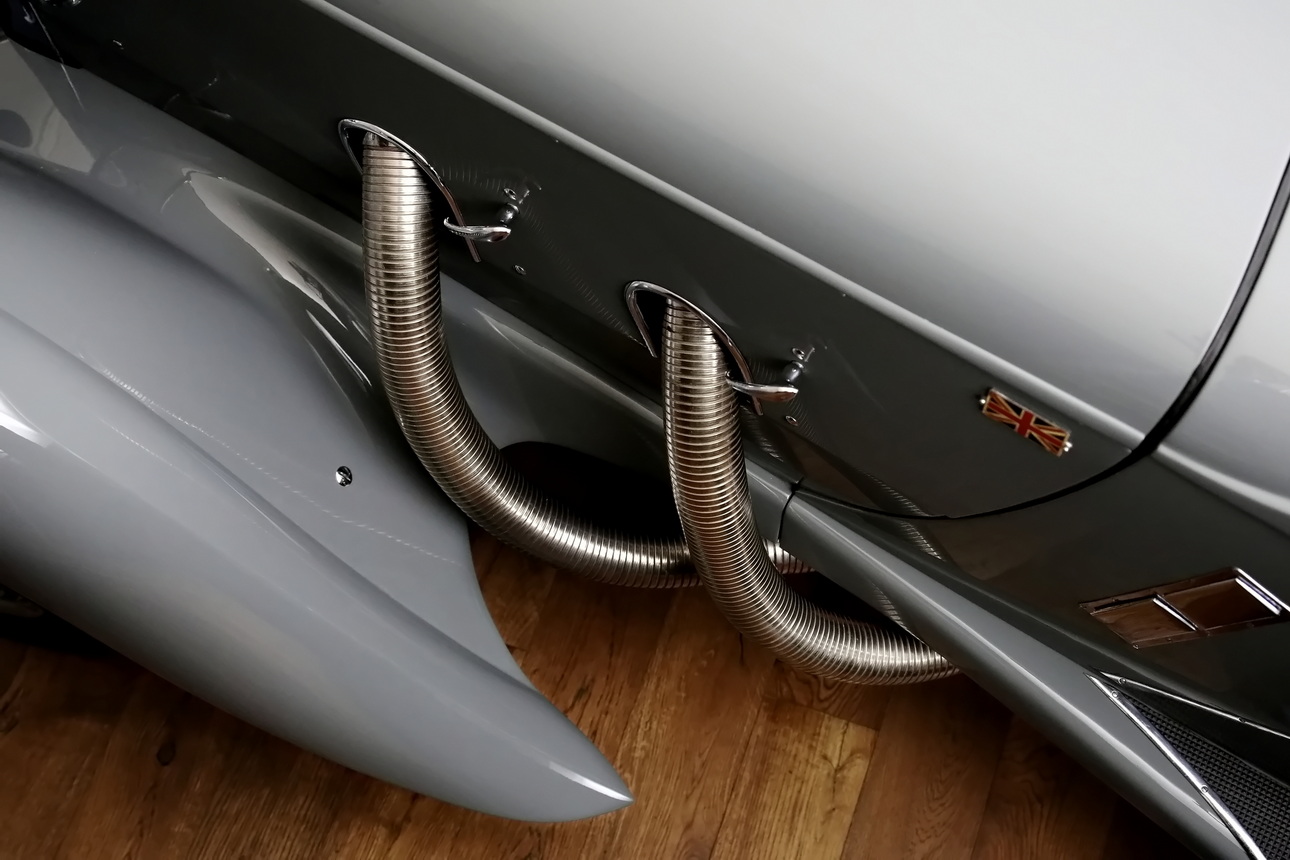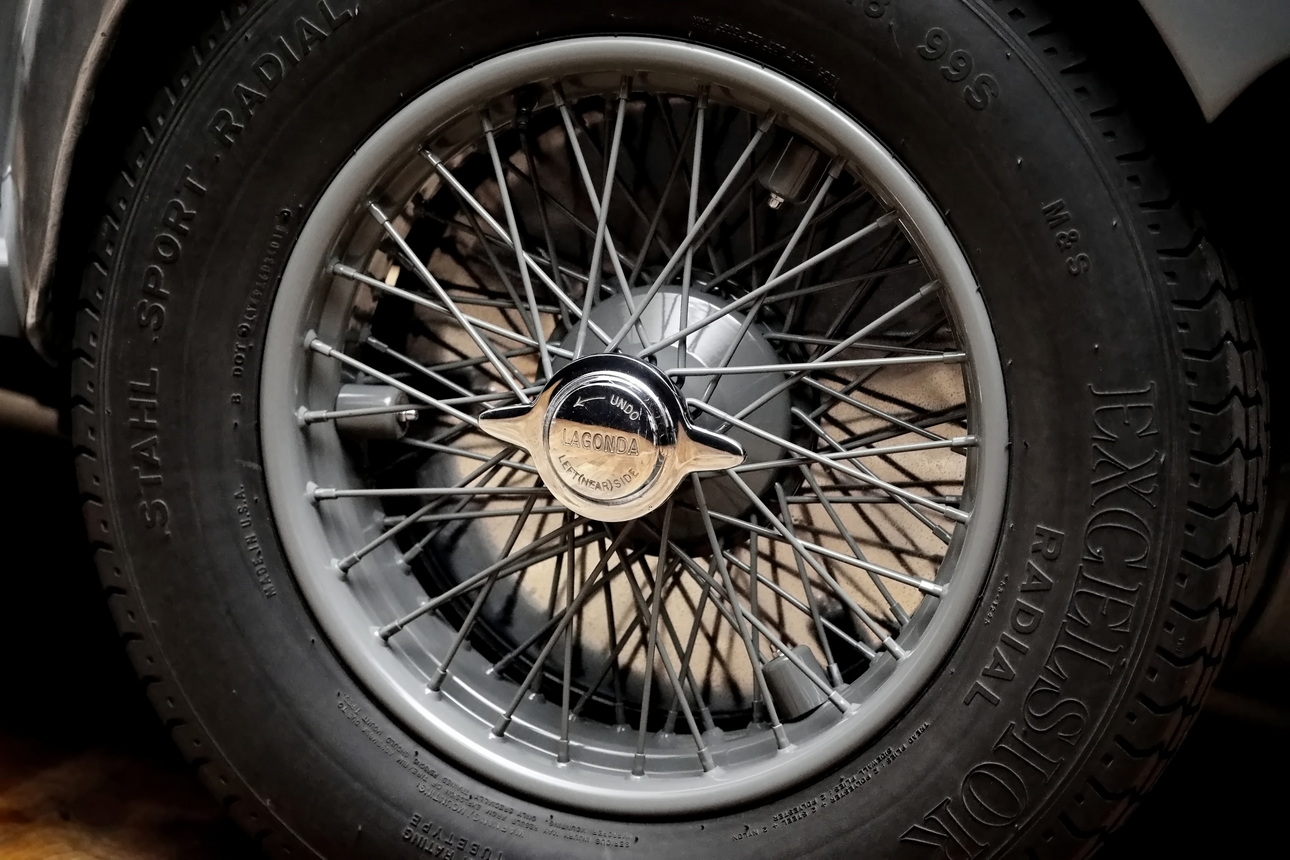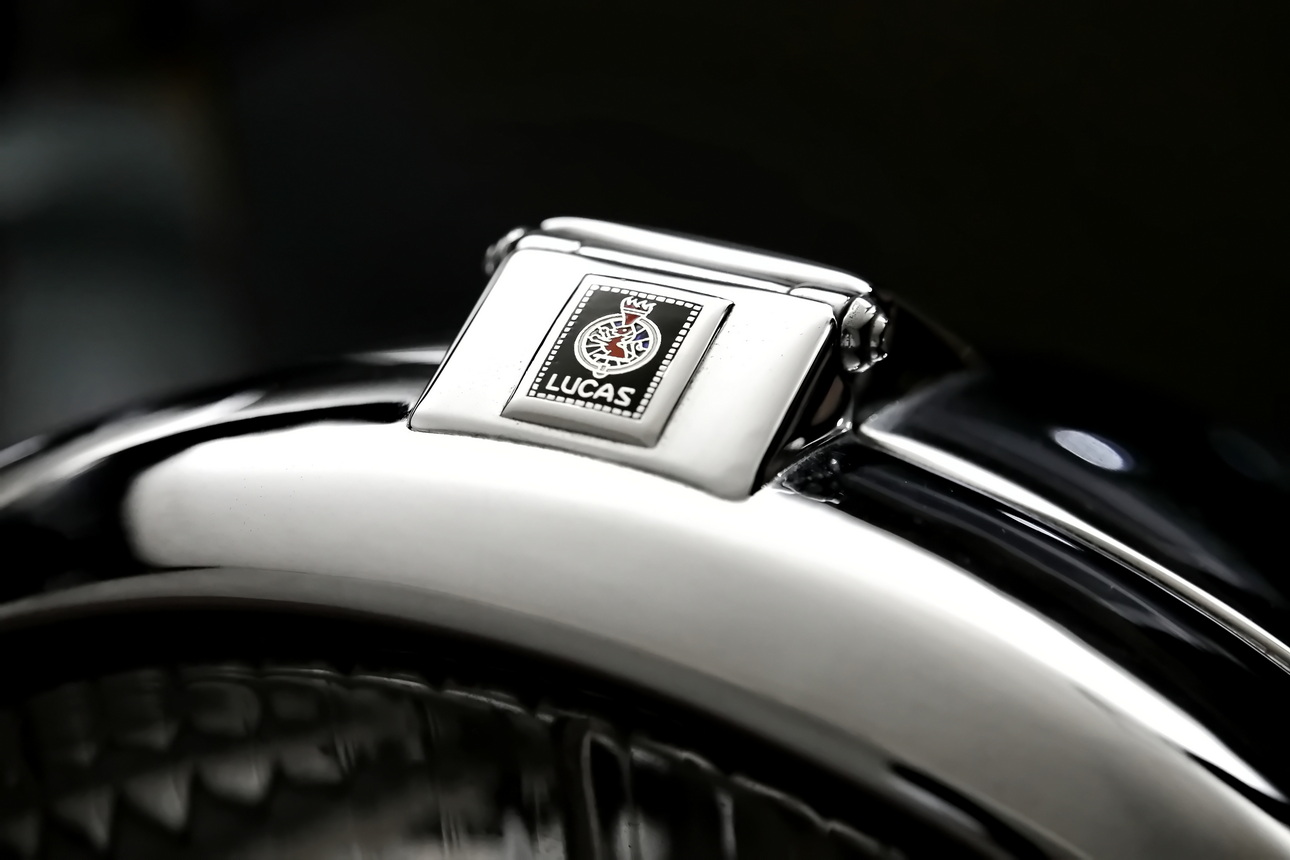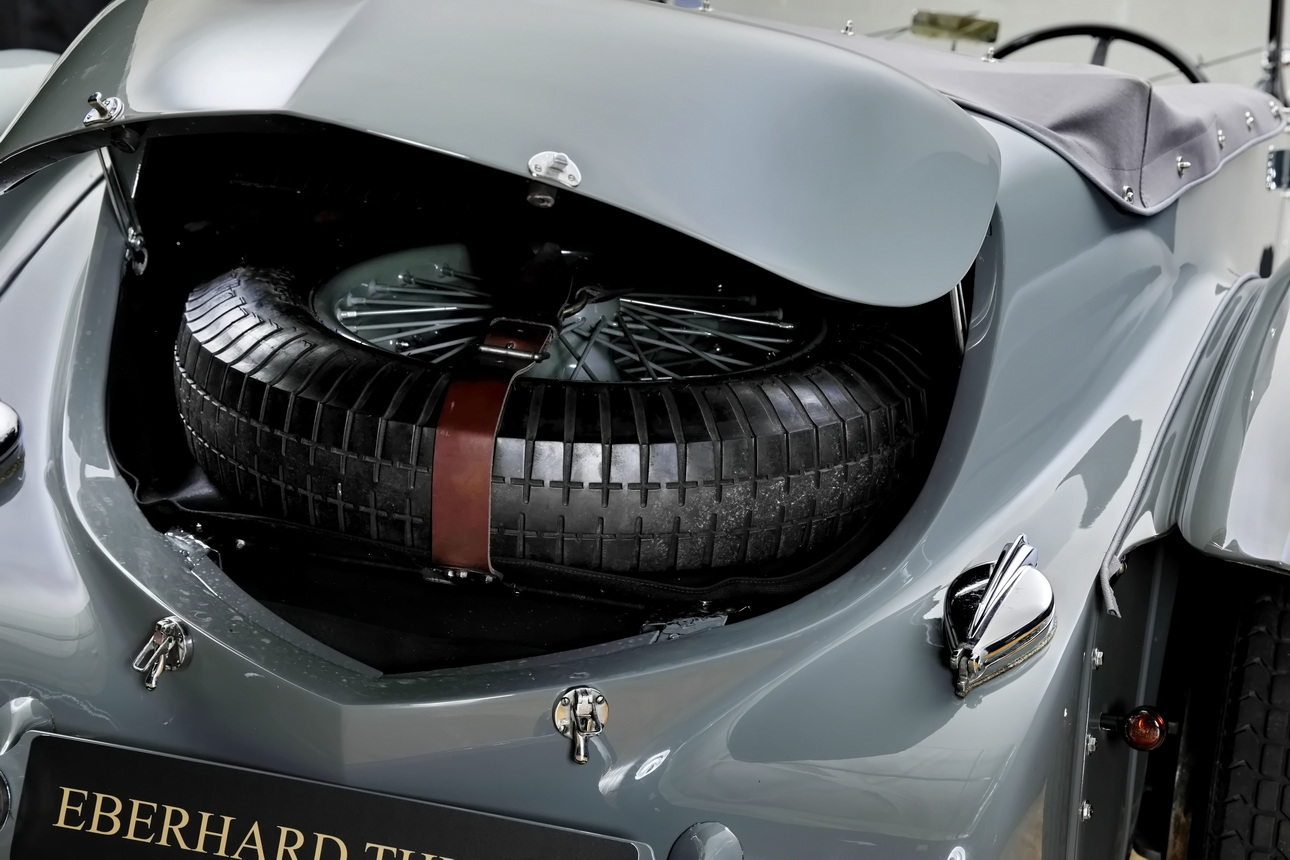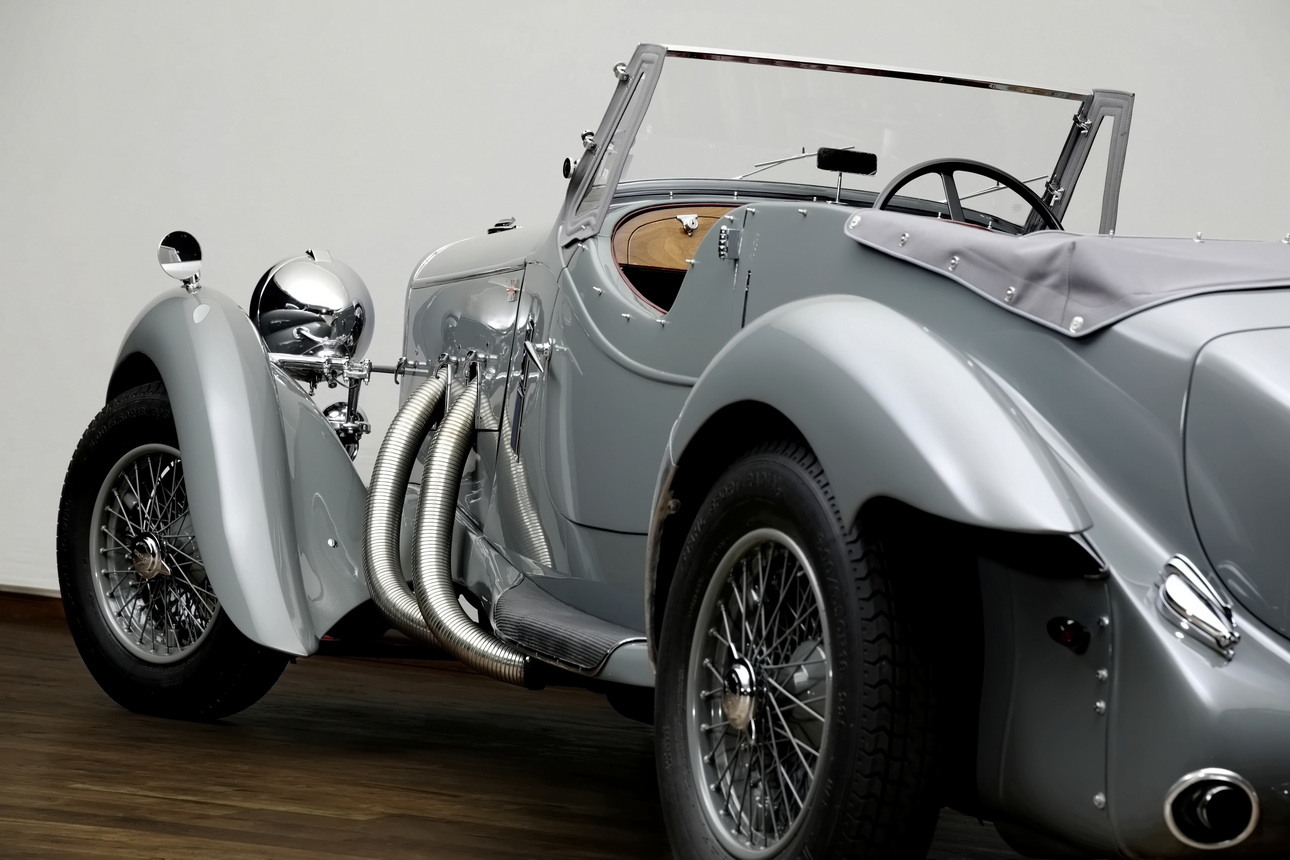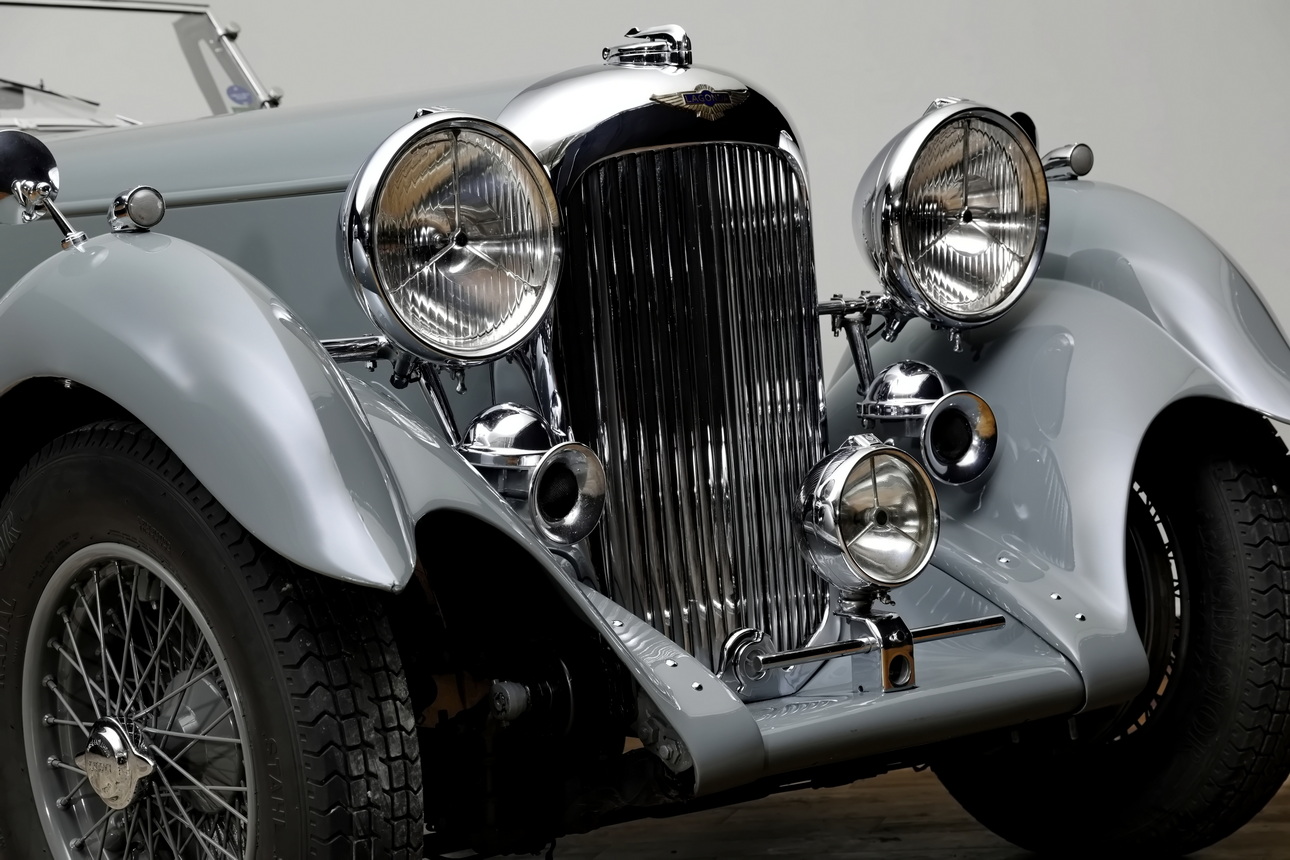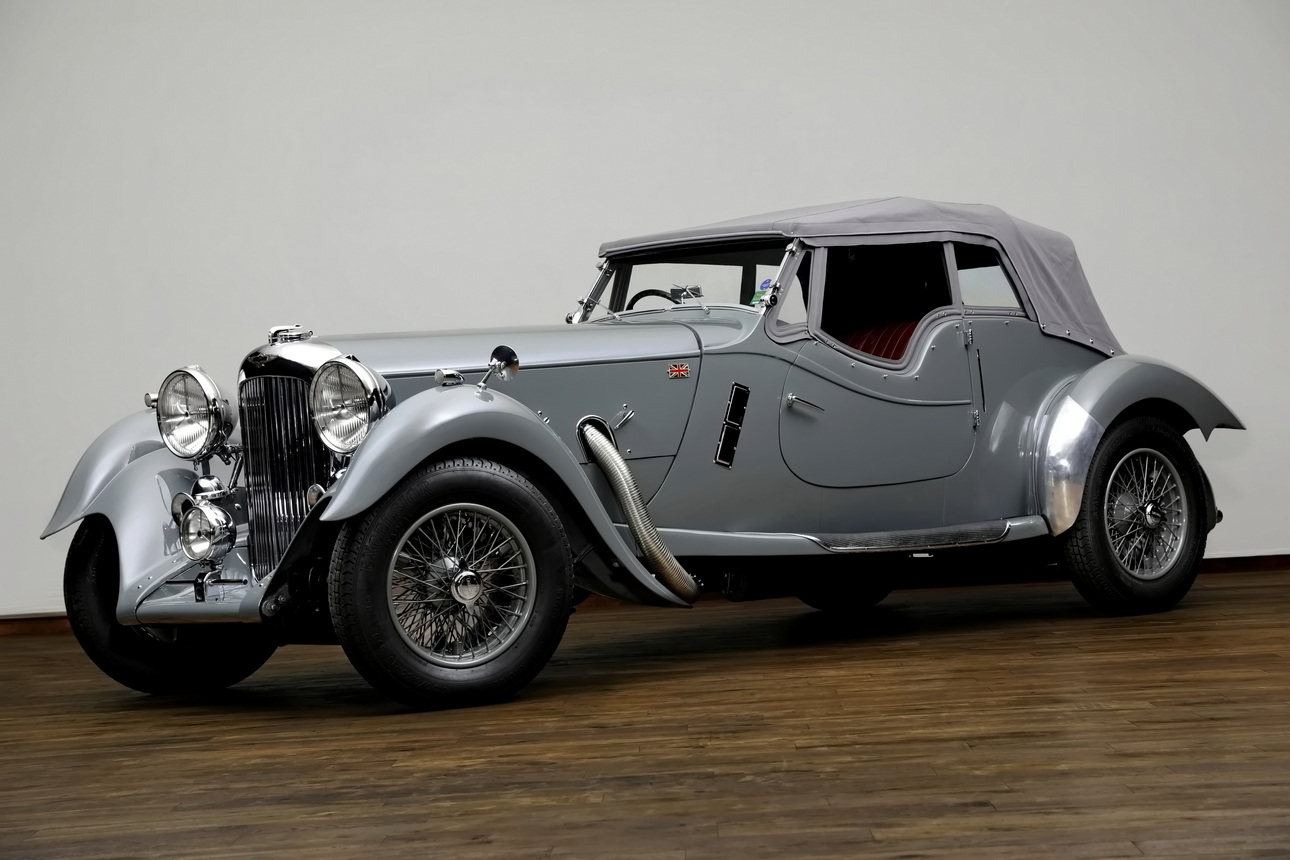Lagonda LG 45 Rapide Tourer
Highlights
Data & Facts
This Automobile
Among true connoisseurs, the Lagonda LG 45 Rapide is certainly one of the most important cars of British origin of the pre-war era. The reasons for this valuable status are quickly identified: probably the most exciting sporty design among British pre-war classics, technical maturity and reliability of the fabulous and powerful six-cylinder engine, outstanding smooth and superior driving characteristics, the rarity of this model with only manufactured 25 examples, as well as W.O. Bentley's great start as Lagonda's chief engineer in the years 1935-1939. In addition, there is the "adventurous" and also sympathetic history of perhaps one of the most relevant and interesting British automobile brands.
This Lagonda LG 45 Rapide was first registered in the UK on 2 February 1938, according to the Lagonda LG 45 Rapide Register. The first registration number "GPD 117" remained valid on the car until 2014 and is still present today. The first owner was D. W. Dunkerley, who kept the Rapide until 1947. This was followed by four other ownerships in England, who only had the car for shorter periods. In 1954, another Englishman acquired the Lagonda – sold it in 1961 and bought it back in 1964 – to keep it until his death in 1977. His widow then sold the LG 45 Rapide to the next owner in 1982. The latter was loyal to the special Lagonda for more than 28 years and used the car intensively in the British Lagonda scene as well as at numerous events and rallies until he was 90 years old in 2010.
The next owner from 2010 onwards studied the car intensively and researched its history. He also took part in several rallies from 2011 to 2014. Moreover, he had the car overhauled at great effort in 2010/2011. A corresponding statement on this work is available. In 2014, the Lagonda then came to a collector in Germany and was sold in 2020 to another owner, also in Germany. In 2023, the car went to an owner in Hamburg, who took part in the legendary Mille Miglia in 2024. The LG 45 mastered the rally with flying colours and no problems.
The car was recently repainted in its original delivery colour of grey. The dark red leather interior was also refurbished and the soft top renewed. This original colour scheme complements the LG 45 Rapide perfectly – then as now.
All owners from 1938 until today are known by name. In addition, some illustrious anecdotes and stories about the former ownerships have survived, giving the LG 45 Rapide a living history. In particular, the last owners in England between 1954 and 2014 were involved in the British Lagonda scene and knew each other. The car was therefore a familiar appearance and a presence everywhere. The British vehicle registration document from 1961 is available and records part of the ownership history. So do numerous other documents, historic photos, correspondence and records. In addition, the LG 45 Rapide is also featured in the book "LAGONDA – DIE 4.5 LITER WAGEN DES W.O. BENTLEY" by German Bernd Holthusen from 1994.
With its fully known history, this Lagonda LG 45 Rapide is a contemporary witness to a historically important British automobile brand. For most of its life, it was not just a ‘show object’, but was actively used and always maintained by British Lagonda enthusiasts. The car is in excellent overall condition and is immediately ready for the next connoisseur who particularly appreciates the Lagonda brand. Such an original vehicle is extremely rare on the market.
Model History
He actually wanted to become an opera singer: the founder of Lagonda Motor Co. Ltd, Wilbur Gunn from Ohio, had travelled to London in 1898 to further train his voice. However, he decided to use his technical talents and founded the Lagonda company one year later, which started building motorbikes and three-wheeled vehicles. From 1909, the first automobiles were built. Wilbur Gunn died in 1920. In 1935, Lagonda won the famous Le Mans race, the most important of its time. However, this victory did not bring economic success.
In the same year, however, the company had to file for bankruptcy because it was not working efficiently with over 20 different models in its programme. A new consortium led by Alan Good took over the brand. They recruited W.O. Bentley with a top-class engineering team at Rolls-Royce Motors. The target was to build the best car in the world within two years. In the course of the reorientation they thus concentrated on the luxury segment and in 1936/1937 also introduced a newly developed V12 engine which W.O. Bentley had developed. Another basis for the new strategy was the Lagonda M45, which had already been built in 1933/1934. These cars, like its successors, had Meadows' proven 4.5 litre six-cylinder with around 140 hp and offered plenty of potential for upgrading the brand. In autumn 1935 the LG 45 was introduced as a further development (of the M45) directed by W.O. Bentley. As usual at the time, this model was offered in various body styles.
In August 1936, Lagonda presented the models for 1937, including the new LG 45 "Rapide" version. The idea of the Rapide was to reactivate the former sportiness of the brand, which had to take a back seat to higher comfort standards under W.O. Bentley. The Rapide was designed by the young in-house designer Frank Feeley. Its lines were so successful that it is still considered the most beautiful and exciting version of the Lagonda of the time. Its sportiness and dynamics still inspire, even after more than 80 years. In addition, the engine, transmission and chassis were modified and tuned for more sportiness. The side pipes of the exhaust system were a striking detail inspired by other high-profile sports cars. Only 25 examples of this fascinating automobile were built, making them one of the most sought-after British pre-war classics today.
This Automobile
Among true connoisseurs, the Lagonda LG 45 Rapide is certainly one of the most important cars of British origin of the pre-war era. The reasons for this valuable status are quickly identified: probably the most exciting sporty design among British pre-war classics, technical maturity and reliability of the fabulous and powerful six-cylinder engine, outstanding smooth and superior driving characteristics, the rarity of this model with only manufactured 25 examples, as well as W.O. Bentley's great start as Lagonda's chief engineer in the years 1935-1939. In addition, there is the "adventurous" and also sympathetic history of perhaps one of the most relevant and interesting British automobile brands.
This Lagonda LG 45 Rapide was first registered in the UK on 2 February 1938, according to the Lagonda LG 45 Rapide Register. The first registration number "GPD 117" remained valid on the car until 2014 and is still present today. The first owner was D. W. Dunkerley, who kept the Rapide until 1947. This was followed by four other ownerships in England, who only had the car for shorter periods. In 1954, another Englishman acquired the Lagonda – sold it in 1961 and bought it back in 1964 – to keep it until his death in 1977. His widow then sold the LG 45 Rapide to the next owner in 1982. The latter was loyal to the special Lagonda for more than 28 years and used the car intensively in the British Lagonda scene as well as at numerous events and rallies until he was 90 years old in 2010.
The next owner from 2010 onwards studied the car intensively and researched its history. He also took part in several rallies from 2011 to 2014. Moreover, he had the car overhauled at great effort in 2010/2011. A corresponding statement on this work is available. In 2014, the Lagonda then came to a collector in Germany and was sold in 2020 to another owner, also in Germany. In 2023, the car went to an owner in Hamburg, who took part in the legendary Mille Miglia in 2024. The LG 45 mastered the rally with flying colours and no problems. The car was recently repainted in its original delivery colour of grey. The dark red leather interior was also refurbished and the soft top renewed. This original colour scheme complements the LG 45 Rapide perfectly – then as now.
All owners from 1938 until today are known by name. In addition, some illustrious anecdotes and stories about the former ownerships have survived, giving the LG 45 Rapide a living history. In particular, the last owners in England between 1954 and 2014 were involved in the British Lagonda scene and knew each other. The car was therefore a familiar appearance and a presence everywhere. The British vehicle registration document from 1961 is available and records part of the ownership history. So do numerous other documents, historic photos, correspondence and records. In addition, the LG 45 Rapide is also featured in the book "LAGONDA – DIE 4.5 LITER WAGEN DES W.O. BENTLEY" by German Bernd Holthusen from 1994.
With its fully known history, this Lagonda LG 45 Rapide is a contemporary witness to a historically important British automobile brand. For most of its life, it was not just a ‘show object’, but was actively used and always maintained by British Lagonda enthusiasts. The car is in excellent overall condition and is immediately ready for the next connoisseur who particularly appreciates the Lagonda brand. Such an original vehicle is extremely rare on the market.
Model History
He actually wanted to become an opera singer: the founder of Lagonda Motor Co. Ltd, Wilbur Gunn from Ohio, had travelled to London in 1898 to further train his voice. However, he decided to use his technical talents and founded the Lagonda company one year later, which started building motorbikes and three-wheeled vehicles. From 1909, the first automobiles were built. Wilbur Gunn died in 1920. In 1935, Lagonda won the famous Le Mans race, the most important of its time. However, this victory did not bring economic success.
In the same year, however, the company had to file for bankruptcy because it was not working efficiently with over 20 different models in its programme. A new consortium led by Alan Good took over the brand. They recruited W.O. Bentley with a top-class engineering team at Rolls-Royce Motors. The target was to build the best car in the world within two years. In the course of the reorientation they thus concentrated on the luxury segment and in 1936/1937 also introduced a newly developed V12 engine which W.O. Bentley had developed. Another basis for the new strategy was the Lagonda M45, which had already been built in 1933/1934. These cars, like its successors, had Meadows' proven 4.5 litre six-cylinder with around 140 hp and offered plenty of potential for upgrading the brand. In autumn 1935 the LG 45 was introduced as a further development (of the M45) directed by W.O. Bentley. As usual at the time, this model was offered in various body styles.
In August 1936, Lagonda presented the models for 1937, including the new LG 45 "Rapide" version. The idea of the Rapide was to reactivate the former sportiness of the brand, which had to take a back seat to higher comfort standards under W.O. Bentley. The Rapide was designed by the young in-house designer Frank Feeley. Its lines were so successful that it is still considered the most beautiful and exciting version of the Lagonda of the time. Its sportiness and dynamics still inspire, even after more than 80 years. In addition, the engine, transmission and chassis were modified and tuned for more sportiness. The side pipes of the exhaust system were a striking detail inspired by other high-profile sports cars. Only 25 examples of this fascinating automobile were built, making them one of the most sought-after British pre-war classics today.
